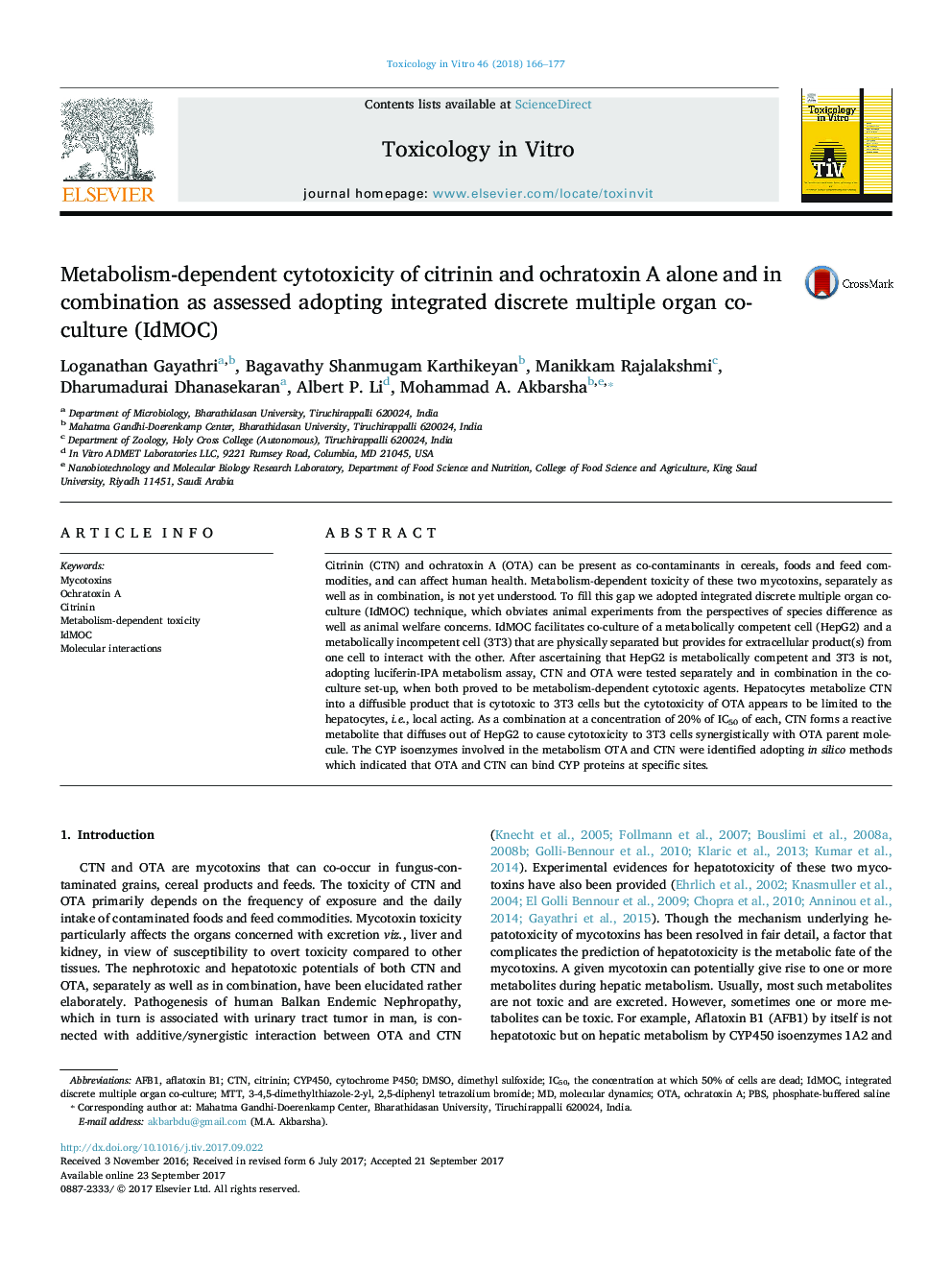| کد مقاله | کد نشریه | سال انتشار | مقاله انگلیسی | نسخه تمام متن |
|---|---|---|---|---|
| 5562502 | 1562699 | 2018 | 12 صفحه PDF | دانلود رایگان |

- IdMOC was adopted to decipher metabolism-dependent cytotoxicity of CTN and OTA.
- CTN metabolite(s) from hepatocytes affects the hepatocytes locally as well as fibroblasts distally.
- OTA metabolite(s) from hepatocytes is selectively cytotoxic to liver cells, thus only locally acting.
- CTN metabolite and OTA parent molecule are synergistically toxic.
- In silico analysis shows that CTN and OTA interact well with CYP proteins.
Citrinin (CTN) and ochratoxin A (OTA) can be present as co-contaminants in cereals, foods and feed commodities, and can affect human health. Metabolism-dependent toxicity of these two mycotoxins, separately as well as in combination, is not yet understood. To fill this gap we adopted integrated discrete multiple organ co-culture (IdMOC) technique, which obviates animal experiments from the perspectives of species difference as well as animal welfare concerns. IdMOC facilitates co-culture of a metabolically competent cell (HepG2) and a metabolically incompetent cell (3T3) that are physically separated but provides for extracellular product(s) from one cell to interact with the other. After ascertaining that HepG2 is metabolically competent and 3T3 is not, adopting luciferin-IPA metabolism assay, CTN and OTA were tested separately and in combination in the co-culture set-up, when both proved to be metabolism-dependent cytotoxic agents. Hepatocytes metabolize CTN into a diffusible product that is cytotoxic to 3T3 cells but the cytotoxicity of OTA appears to be limited to the hepatocytes, i.e., local acting. As a combination at a concentration of 20% of IC50 of each, CTN forms a reactive metabolite that diffuses out of HepG2 to cause cytotoxicity to 3T3 cells synergistically with OTA parent molecule. The CYP isoenzymes involved in the metabolism OTA and CTN were identified adopting in silico methods which indicated that OTA and CTN can bind CYP proteins at specific sites.
230
Journal: Toxicology in Vitro - Volume 46, February 2018, Pages 166-177